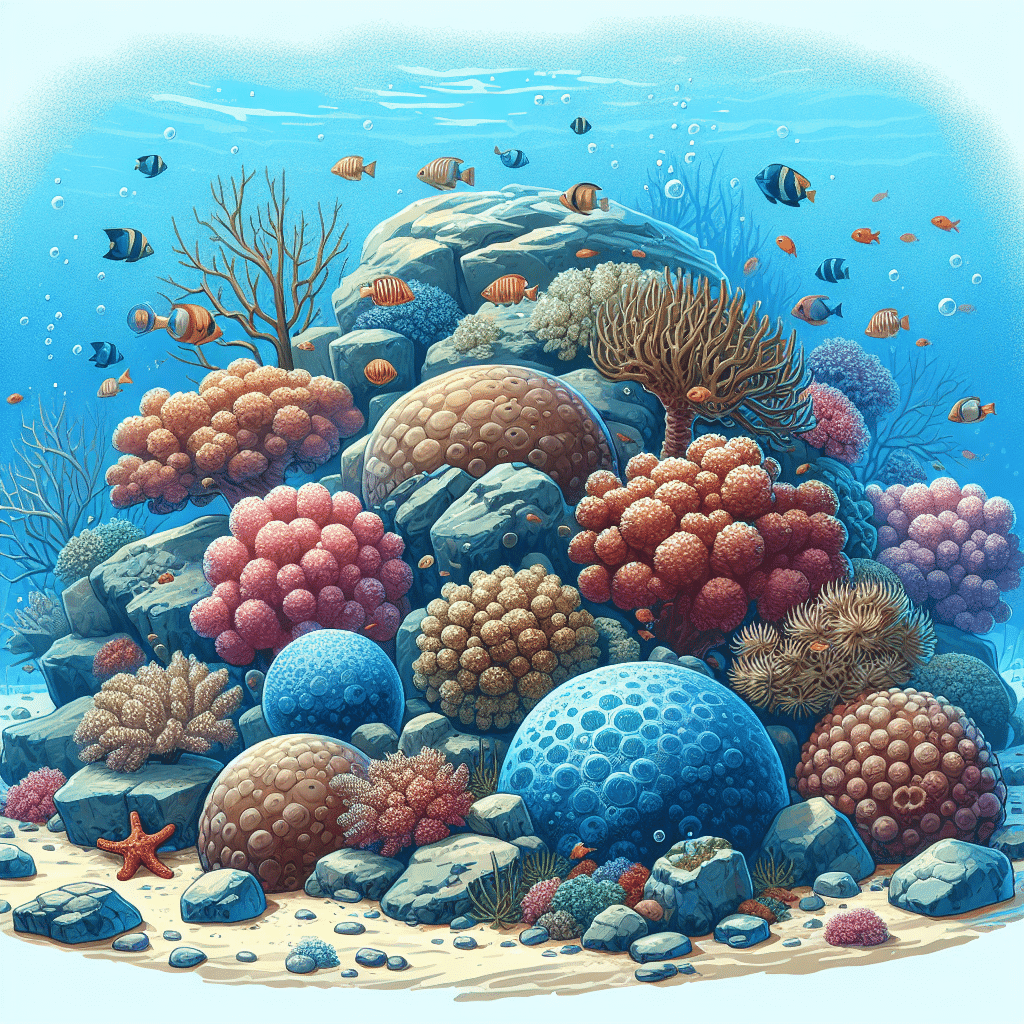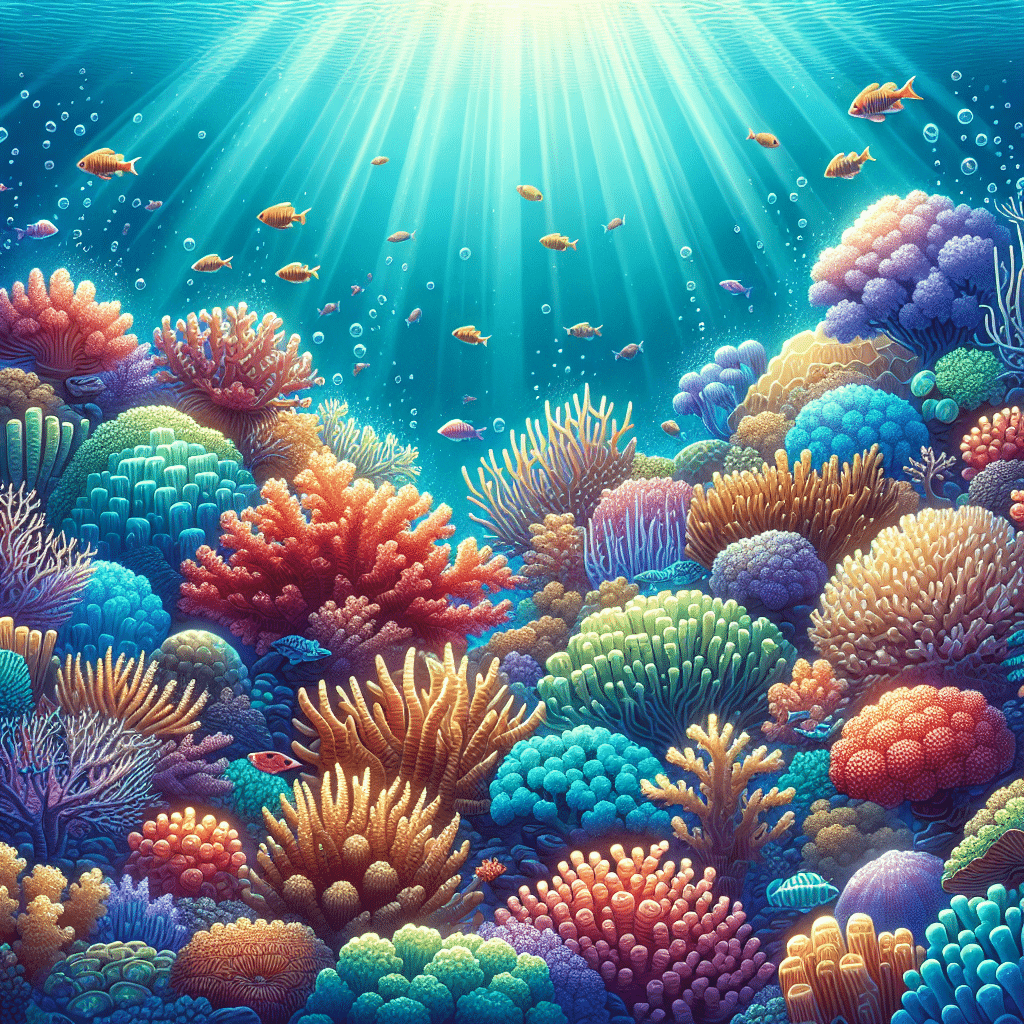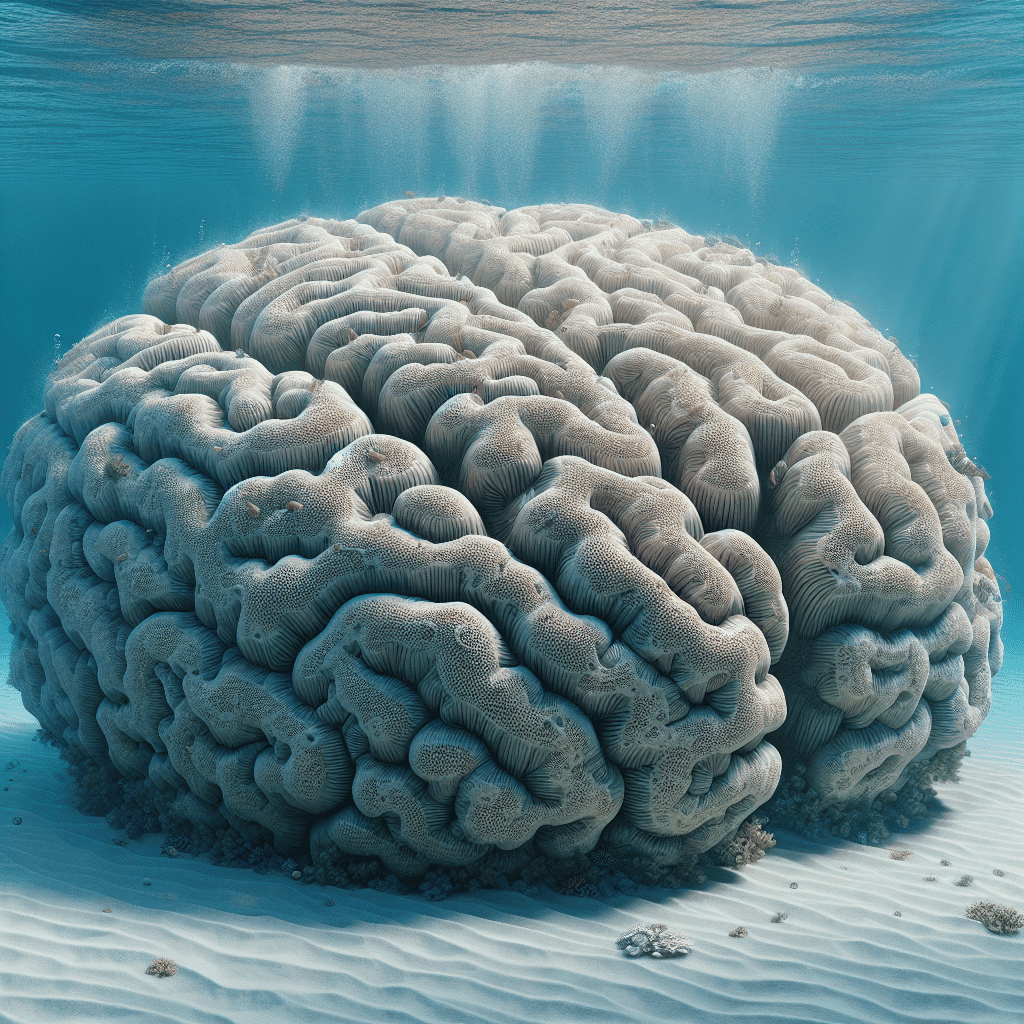Exploring Boulder Corals
Introduction to Boulder Corals
Boulder corals, known for their robust and massive structures, are a vital part of reef ecosystems. One of the most notable species is Orbicella annularis, commonly referred to as the Boulder star coral. It stands out as the most studied and abundant reef-building coral in the Caribbean, showcasing a rich fossil record that dates back centuries (Wikipedia). These corals typically form large colonies that can withstand various environmental challenges, making them a popular choice for reef tank enthusiasts like me.
Boulder corals play a crucial role in providing habitat for countless marine organisms. Their sturdy structures create shelter and breeding grounds for fish and invertebrates, contributing to the overall biodiversity of the reef.
Species Variations
Boulder corals feature various species, each exhibiting unique characteristics and adaptations. Orbicella annularis is not just a single species; it’s been identified as a complex of at least three separate species, including O. faveolata and O. franksi. These species were once thought to be a single generalist species, but research has revealed that they grow into different colony shapes based on light conditions (Wikipedia).
Another example is Pavona duerdeni, which is characterized by its massive, boulder-shaped colonies. This species generally grows at a slower rate compared to smaller corals and is less affected by strong wave action unless dislodged (Wikipedia).
Here’s a quick comparison of some boulder coral species:
| Species | Common Name | Growth Rate | Unique Features |
|---|---|---|---|
| Orbicella annularis | Boulder star coral | Moderate | Abundant in Caribbean, complex structure |
| Orbicella faveolata | Moderate | Distinct colony shapes | |
| Orbicella franksi | Moderate | Recognized as a distinct species | |
| Pavona duerdeni | Slow | Massive, rarely affected by wave action |
Understanding the variations among these species can help me and other reef tank hobbyists make informed decisions about which corals to include in our setups. Whether it’s for aesthetics or ecological balance, boulder corals offer a diverse range of options to enhance any reef tank.
For more information on different types of corals, check out our articles on brain coral, black coral, and mushroom coral.
Habitat and Distribution
Natural Habitat of Boulder Corals
Boulder corals, such as Orbicella franksi and Pavona duerdeni, thrive in shallow waters, primarily found in the Caribbean Sea and the Gulf of Mexico. These corals typically grow on fore reefs, which are the outermost parts of coral reefs that face the open ocean. They are usually located at depths ranging from 15 to 30 meters (49 to 98 feet), but they can also be found at depths between 5 to 50 meters (16 to 164 feet) (Wikipedia).
The boulder shape of these corals allows them to withstand varying water conditions, providing a stable habitat for various marine life. They are less affected by strong wave action unless dislodged from their holdfasts due to significant impacts. This resilience makes them ideal for reef ecosystems, providing shelter and support for different species.
Geographic Distribution
The geographic range of boulder corals is impressive, covering several key regions. Orbicella franksi is native to the Caribbean Sea, Gulf of Mexico, Bahamas, Bermuda, and Florida. Similarly, Pavona duerdeni has confirmed presence in locations such as the Gulf of Panama, the Carrizales, Colima coral reef in Western Mexico, Thailand’s Koh Tao reef, Johnston Atoll reef, the Hawaiian Archipelago, and the Emperor seamount chain (Wikipedia).
| Coral Species | Key Locations |
|---|---|
| Orbicella franksi | Caribbean Sea, Gulf of Mexico, Bahamas, Bermuda, Florida |
| Pavona duerdeni | Gulf of Panama, Western Mexico, Koh Tao (Thailand), Johnston Atoll, Hawaiian Archipelago |
This broad distribution highlights the importance of boulder corals in diverse marine ecosystems. Their presence supports a wide range of marine biodiversity, which is crucial for the health of our oceans. As a hobbyist, understanding where these corals thrive can inform decisions on placement and care in your own reef tank. For more about different types of corals, check out our articles on brain coral and mushroom coral.
Characteristics of Boulder Corals
Boulder corals are fascinating creatures that play a significant role in reef ecosystems. Understanding their unique characteristics can help me better care for them in my reef tank.
Colony Structure
Boulder corals, particularly Orbicella franksi, typically form massive clumps with uneven surfaces. They can also take on plate-like formations or even encrust in shadier locations. These colonies can vary in size and shape, making them visually interesting additions to any reef tank. The growing edges of these corals display a mix of large and small corallites, which is a distinguishing feature compared to other species like Orbicella faveolata.
Here’s a quick overview of the colony structure:
| Coral Type | Colony Structure |
|---|---|
| Orbicella franksi | Massive clumps, uneven surfaces, plate-like formations, encrusting in shady areas |
Coloration and Corallites
The coloration of boulder corals like Orbicella franksi is predominantly orange-brown, greenish-brown, or greyish-brown. This natural color palette can blend beautifully into a reef tank, making these corals a great choice for aquarists looking to create a vibrant underwater landscape. The corallites, or the small, cup-like structures that house the coral polyps, typically measure about 3.5 mm across. Their unique structural features and colors add depth and character to the overall tank environment.
| Coral Type | Coloration | Corallite Size |
|---|---|---|
| Orbicella franksi | Orange-brown, greenish-brown, greyish-brown | 3.5 mm |
Understanding the characteristics of boulder corals helps me make informed decisions about their care, placement, and overall health in my reef tank. For more on different types of corals, check out our articles on brain coral, mushroom coral, and torch coral.
Environmental Threats
Boulder corals, like many other coral species, face significant environmental threats that can impact their health and survival. Understanding these threats is crucial for fish tank and reef tank hobbyists who want to maintain healthy coral ecosystems.
Coral Diseases
Coral diseases pose a serious challenge for boulder corals, particularly species like Orbicella franksi. While this species exhibits some resistance to diseases, it is still vulnerable to issues such as coral plague, yellow-band disease, black band disease, and coral bleaching. These diseases can lead to tissue loss and ultimately affect the colony’s survival (Wikipedia).
| Disease | Description | Impact on Corals |
|---|---|---|
| Coral Plague | A disease that causes rapid tissue loss. | High mortality rate. |
| Yellow-Band Disease | Characterized by yellow bands on the coral. | Reduces health and growth. |
| Black Band Disease | Results in a black band of dead tissue. | Leads to colony death. |
| Coral Bleaching | Expulsion of symbiotic algae due to stress. | Weakens corals and can lead to death. |
Maintaining water quality and stability in your reef tank can help mitigate these risks. Regularly checking and adjusting the parameters can go a long way in keeping your boulder coral healthy.
Impact of Climate Change
Climate change is a major threat to coral reefs worldwide, and boulder corals are no exception. Rising ocean temperatures can lead to coral bleaching, which is when corals expel the algae that live in their tissues. This process causes corals to lose their color and vital energy source, leading to weakened health and increased susceptibility to diseases (NOAA Fisheries).
Additionally, ocean acidification, a direct result of increased carbon dioxide levels, can hinder coral growth and structural integrity. Boulder corals rely on calcium carbonate to build their skeletons, and as the ocean becomes more acidic, this process becomes less efficient.
| Climate Change Factor | Effect on Boulder Corals |
|---|---|
| Rising Temperatures | Increased bleaching events and mortality. |
| Ocean Acidification | Reduced ability to form calcium carbonate structures. |
For hobbyists, understanding these environmental threats emphasizes the importance of creating stable and supportive conditions in their tanks. Ensuring proper lighting, water quality, and environmental controls can help counteract some of these challenges. If you want to learn more about the different types of corals and their care, check out our articles on corals and specific coral types like brain coral and torch coral.
Conservation Status
Near-Threatened Status
Boulder coral, scientifically known as Orbicella franksi, is classified as a “near-threatened species” by the International Union for Conservation of Nature (Wikipedia). This coral is native to shallow waters in locations such as the Caribbean Sea, the Gulf of Mexico, the Bahamas, Bermuda, and Florida. Although it shows some resilience to coral diseases, it remains vulnerable to issues like coral plague, yellow-band disease, black band disease, and coral bleaching.
The primary threats to boulder coral include climate change, which leads to rising sea temperatures, ocean acidification, and habitat destruction. These factors contribute significantly to the decline of coral populations globally, making conservation efforts crucial.
Conservation Efforts
Efforts to conserve boulder corals and their habitats are underway in various regions. For example, Belize has made notable progress in reef restoration by implementing protective measures for parrotfish since 2009. This initiative has led to an increase in herbivorous fish populations, resulting in a decrease in macroalgae cover, which is essential for maintaining healthy coral reefs (Smithsonian Ocean).
In Honduras, there has been a recognized decline in reef health. However, there is hope for improvement through the establishment of fully protected zones within marine protected areas and enhanced enforcement for herbivorous fish populations. These measures could potentially reduce macroalgae growth and promote an increase in coral cover (Smithsonian Ocean).
As hobbyists, we can contribute to the well-being of boulder corals by ensuring our reef tanks mimic natural conditions as closely as possible and by being mindful of the sources of our corals. Supporting sustainable practices in coral aquaculture and participating in local conservation initiatives can make a difference. If you’re interested in learning more about the care and maintenance of different coral species, be sure to check out our articles on corals and specific types like brain coral and torch coral.
Growth Rate and Patterns
Curious about how quickly boulder corals grow and what affects their growth? Let’s dive into the growth rates and the various factors that play a role in their development.
Growth Rate of Massive Corals
Boulder corals, being a type of massive coral, generally have a slow growth rate. On average, they can increase in size by about 0.5 cm to 2 cm per year. However, under optimal conditions, some species can grow even faster, reaching up to 4.5 cm per year. This slow pace means that recovery from damage can take a long time, which is something to keep in mind for those of us maintaining reef tanks.
| Coral Type | Average Growth Rate (cm/year) | Optimal Growth Rate (cm/year) |
|---|---|---|
| Boulder Coral | 0.5 – 2 | Up to 4.5 |
| Branching Coral | Up to 10 | Varies by species |
| Staghorn Coral | Up to 15 (6 inches/year) | Under ideal conditions |
For comparison, branching corals like staghorn corals can grow much faster, reaching vertical growth rates of up to 10 cm per year in the right conditions. This makes them some of the fastest-growing corals, capable of growing up to 8 inches in branch length per year when healthy (NOAA Fisheries).
Factors Affecting Growth
Several factors influence the growth rates of boulder corals and other types of corals:
- Water Quality: Corals thrive in clean, clear waters. High levels of nutrients or pollutants can hinder their growth.
- Light Availability: Adequate light is crucial for the symbiotic algae (zooxanthellae) living within corals. They rely on photosynthesis to provide energy.
- Temperature: Coral growth is optimal within certain temperature ranges. Warmer waters can boost growth, but extreme temperatures can lead to stress.
- Salinity: Corals have specific salinity requirements. Significant changes can affect their health and growth.
- Current Flow: Water movement can help deliver food and oxygen while removing waste products, which is essential for coral health.
Understanding these factors can help hobbyists create an ideal environment for their boulder corals and other types of corals like brain coral and torch coral. Monitoring your tank’s conditions and making adjustments as needed can significantly impact the growth and health of your corals.
Coral Reef Ecosystem
Importance of Coral Reefs
Coral reefs are often referred to as the “rainforests of the sea” due to their incredible biodiversity and the abundance of life they support. They are home to thousands of species, including fish, invertebrates, and marine mammals. This makes coral reefs one of the most complex and fascinating ecosystems known to humankind (Oceanic Research Group).
Coral reefs play a vital role in protecting coastlines from erosion and storm damage. They act as natural barriers, absorbing wave energy and reducing the impact of storms on shorelines. This not only helps maintain the physical integrity of coastlines but also protects human settlements and livelihoods.
Additionally, coral reefs contribute significantly to the economy through tourism and fishing. They attract millions of visitors each year, providing opportunities for recreational activities like snorkeling and diving. The economic value of coral reefs is immense, supporting local communities and providing jobs.
Role of Corals in Ecosystem
Corals are foundational species in reef ecosystems. They create structures that provide habitat for a vast array of marine life. The symbiotic relationship between corals and zooxanthellae (tiny algae) is crucial for their survival. The algae live within the coral tissues, providing them with energy through photosynthesis while receiving protection and nutrients in return.
Coral reefs also play a key role in nutrient cycling. They help maintain the balance of marine ecosystems by recycling nutrients and supporting primary productivity. This process sustains the food web, benefiting not just the corals but also the myriad of organisms that rely on them for shelter and food.
The different zones of coral reefs, such as the reef flat and reef crest, host various species and contribute to the overall health of the reef ecosystem (NOAA Coral Reef Conservation Program). In essence, corals are not just beautiful structures; they are essential for marine biodiversity and the health of our oceans.
Understanding the significance of boulder coral and its role within the reef ecosystem can enhance the care and placement of these corals in my own reef tank. For more information on different types of corals, check out our articles on brain coral, torch coral, and acropora.
Reef Health and Restoration
Reef Health Index
The Reef Health Index (RHI) is a crucial tool used to gauge the overall condition of coral reefs. It considers various factors, such as coral cover, macroalgae cover, and herbivorous fish populations. A higher RHI indicates healthier reefs, while a lower score suggests ecological stress. For instance, in 2020, the Belizean reef saw improved grades across three categories, with coral cover increasing and macroalgae cover decreasing, resulting in an overall RHI improvement. The herbivorous fish populations received a “Good” grade for the first time, showcasing successful restoration efforts in Belize’s coral reefs (Smithsonian Ocean).
| Region | Coral Cover | Macroalgae Cover | Herbivorous Fish Grade |
|---|---|---|---|
| Belize | Increased | Decreased | Good |
| Mexico | Stable | Stable | Not rated |
| Guatemala | Stable | Stable | Not rated |
| Honduras | Decreased | Increased | Not rated |
Success Stories in Reef Restoration
There have been some remarkable success stories in the realm of reef restoration. One notable example is Belize’s significant progress in reef restoration after implementing protective measures for parrotfish back in 2009. This decision led to an increase in herbivorous fish populations and a decrease in macroalgae cover. As a result, the structure and function of its coral reefs have been successfully restored (Smithsonian Ocean).
While Honduras experienced a decrease in reef health, there is still hope for improvement. By increasing fully protected zones within marine protected areas and enhancing enforcement efforts for herbivorous fish, it’s possible to reduce macroalgae and increase coral cover. The dedication to improving reef health across regions is a testament to the resilience of coral ecosystems when given the right protections.
For more information on different coral types and their care, check out our articles on brain coral, mushroom coral, and staghorn coral.



